During ISUOG Outreach's third trip to Hinche and the final program for Phase I, the training was abruptly interrupted by the 2010 Haitian Earthquake.
Project Title: ISUOG Outreach training in ultrasound in obstetrics and gynecology, Phase I - Part III
Location: Hinche, Haiti
Dates: 10-16 January 2017
Project partners: Partners in Health, GE Healthcare, Physcians for Peace
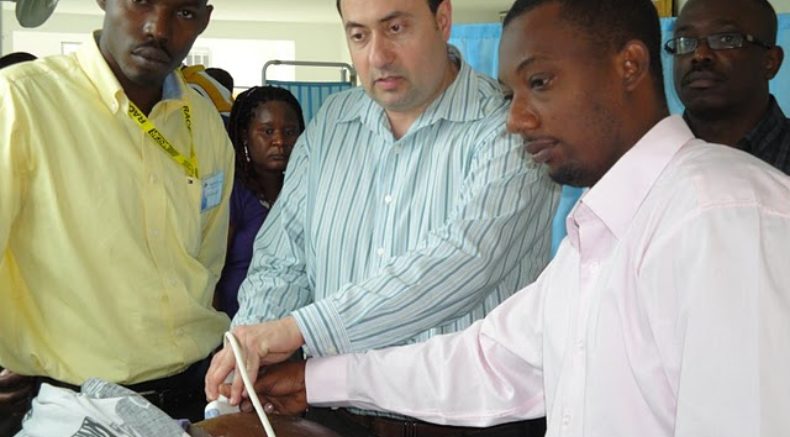
Haiti Outreach Program
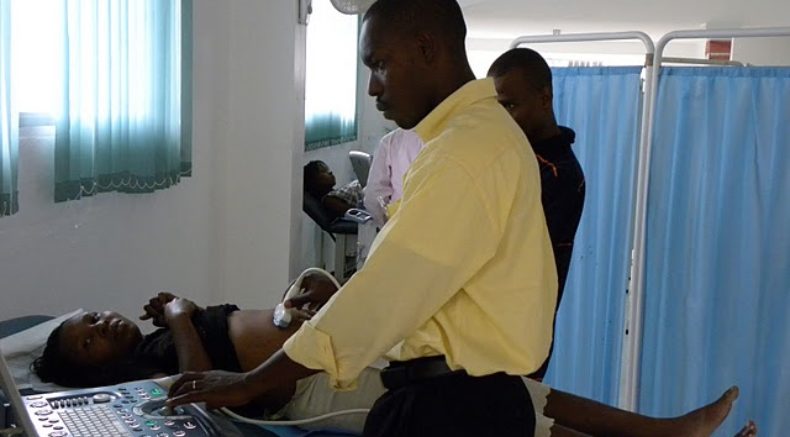
Haiti Outreach Program
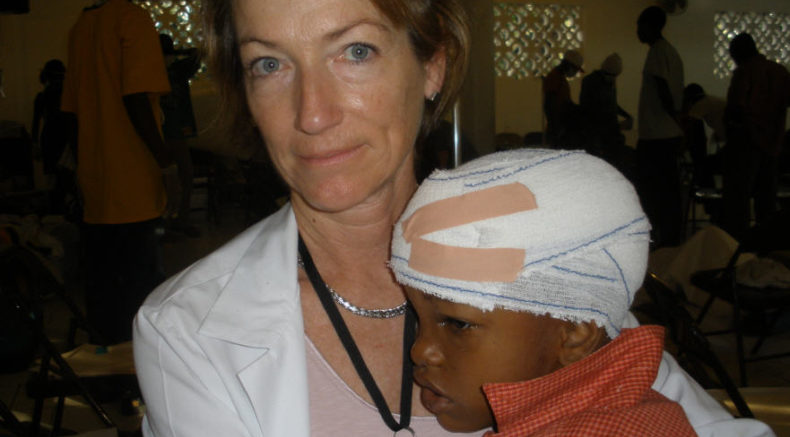
Haiti Earthquake
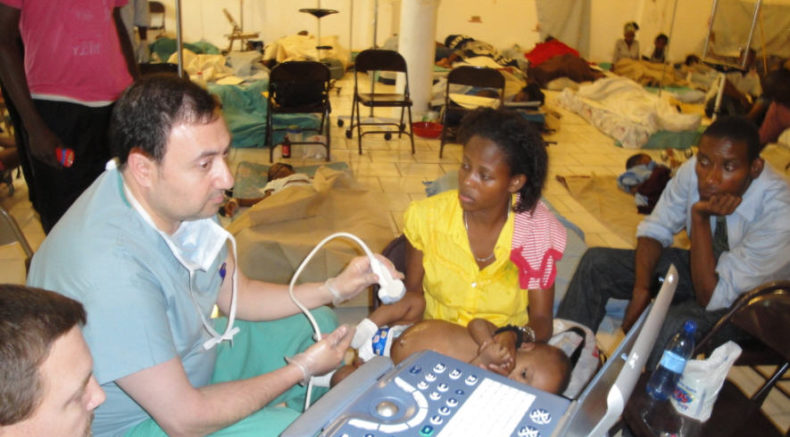
Haiti Earthquake
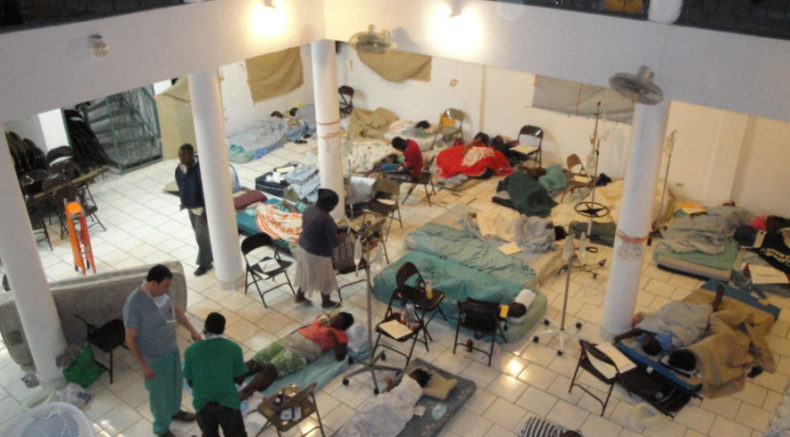
Haiti Earthquake 6
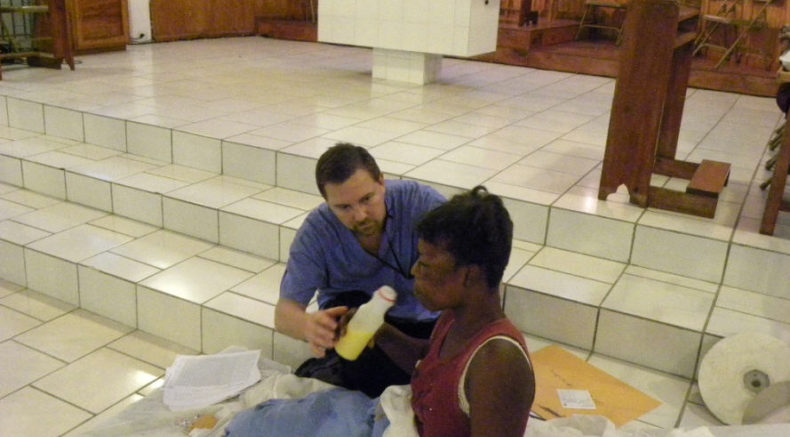
Haiti Earthquake
ISUOG Training team:
Prof. Alfred Abuhamad (USA) - team leader
Dr. Lisbet Hanson (USA)
Dr. Mike Kammermeier (GE Healthcare)
Training summary (via Prof. Alfred Abuhamad):
The ISUOG Outreach team for this trip included myself, Dr. Lisbet Hanson and Mr. Mike Kammermeier who heads the GE education team in the United States. Our training site was in Cange, a city about 40 miles up the mountains from Port au Prince. Given the poor quality of the road, it took us approximately 2 hours to drive from the airport. The Cange complex includes a small hospital, outpatient clinics, a school, a church, housing and educational classrooms. The site itself, which grew progressively over the past 20 years, was built by Partners in Health and is currently run by the local organization of Zanmi Lasante.
We planned to spend Monday and Tuesday training physicians, followed by two days training midwives. Meetings were scheduled for Friday, January 15th at the General Hospital and the Midwifery School in Port au Prince where the directors wanted to establish ISUOG sponsored ultrasound training for their residents and student midwives. Upon our arrival we were happy to see the Haitian physicians and sensed their excitement for the upcoming training sessions.
Our first training day began with 2 hours of didactics which included a pretest and the use of ultrasound in the first trimester. Hands-on training followed with 3 ultrasound stations and included more than 50 pregnant women who waited their turn very patiently. Many of them walked for hours to reach the clinic that day. We were pleased that several of the physicians have attained a fairly high level of ultrasound proficiency and can easily serve as trainers in the future. We specifically mention Dr. Jonas, Dr. Milien and Dr. Saintard who we felt have developed extensive expertise and technical knowledge of ultrasound. In the afternoon we focused on how to optimize the ultrasound images with hands-on scanning on a phantom that Mike brought with him.
Didactics for the second morning session on Tuesday included ultrasound in the second and third trimester and the use of ultrasound in gynecology with a focus on adnexal masses and uterine fibroids. The hands-on training, which followed the didactic session, was focused on gynecology and involved more than 40 patients with various abnormalities. The hands-on session on Tuesday took longer than expected as scanning at one station was halted due to a diagnosis of advanced cervical cancer in a patient who presented with vaginal bleeding (Figure 3). This patient required medical assistance and thus was kept on the ultrasound table until transport to the hospital was made available. After the completion of the hands-on session we had a quick lunch and returned to the classroom for the last session of didactics to the physicians. We decided to do the post-test then and provided a brief summary of the course with an interactive review.
At around 4:48 pm, as I was asking if anybody had any questions, the ground shook violently. We were all stunned and did not know what was happening, but soon realized that it was an earthquake. A sense of panic prevailed in the room, followed by a scramble to the door. We ran outside of the building and moved to higher ground. All cell phone communications were immediately lost. Internet access, which was only available at one location within the compound, provided the news that a major earthquake had devastated Port au Prince. Multiple aftershocks were felt throughout the night.
Many of the Haitian physicians that participated in our ultrasound training lived in Port au Prince and had absolutely no contact with their families. Tuesday evening was very eerie, as we walked in a daze within the Cange complex for most of the evening until we retired to our rooms in shock and disbelief. As we regrouped on Wednesday morning, the Haitian physicians had decided to drive to Port au Prince and check on their families and loved ones. We were offered by Partners in Health the option of leaving Haiti through a car ride to the Dominican Republic on Wednesday morning, but after a brief discussion amongst us, we quickly decided to stay and offer assistance in case casualties made their way to Cange. Aside from one or two local physicians, a pediatric emergency physician, and a visiting pediatric surgeon, we were the only physicians on campus. The midwife training session was cancelled and our focus was shifted from ultrasound training to providing emergency care to the earthquake victims.
Victims began to make their way to Cange for care, given the total lack of medical support in Port au Prince. Most medical facilities crumbled and a substantial number of physicians and nurses were missing. In planning for the influx of casualties, the church in the Cange compound, the only facility with fairly open floor layout, was converted to a triage/ED area and was stocked with supplies (Figure 4).
Wednesday morning started with an emergency call to labor and delivery where a twin pregnancy presented in labor following delivery of twin A and a stuck twin B in a compound presentation. With some obstetrical maneuvering, twin B was safely delivered and provided with respiratory assistance (bag and mask with room air given lack of oxygen in delivery room) until she could breath on her own. Our expertise in obstetrics sure came in handy, but we did not know what was to come later that day.
Casualties from Port au Prince started arriving later that Wednesday morning; they came in large numbers. All of the victims who we saw had made the two hour journey from Port au Prince to Cange on dirt roads filled with large potholes, jammed in the back seats of cars, or on wooden doors on flatbeds of trucks (Figure 5) with broken bones, multiple bruises, deep lacerations and open gaping wounds. The pain felt with each bump in the road must have been unbearable.
bout 70 patients made their way to Cange on Wednesday and quickly filled the church grounds. Our care primarily focused on suturing deep lacerations, casting and aligning broken bones, dressing abrasions and deep wounds, starting intravenous fluids, providing tetanus shots and antibiotics. Several patients recounted their horrific stories to us; a student nurse who was attending class on the fourth floor of the nursing school in Port au Prince was the sole survivor of her class of 94 students. Two patients who were in the seminary when the earthquake hit had been buried for 12 hours with 2 other bodies. One suffered minor injuries and the other had a major trauma to his right leg with compartmental syndrome. A father dropped his 7 year old son off who sustained multiple deep scalp lacerations and a broken leg, to return 24 hours later with his injured mother who sustained chest trauma. We brought an ultrasound machine from the training site and put it to good use looking for free fluid in the abdomen and identifying flow in injured extremities. Patients who were stable with no place to go spent the night on the ground of the second floor of the church on sheets and cardboard.
The flow of patients was continuous throughout the next day. By Thursday evening patients filled every corner of the church. Their cries for help filled the air and echoed throughout the church. Although we tried to provide some relief with Morphine, the pain from most injuries was clearly too severe to treat. Dislocated hips and shoulders, major bone fractures, severely lacerated hands and feet, facial contusions, and deep puncture wounds; we felt so helpless.
After some discussion with Zanmi Lasante staff, ISUOG executive director Sarah Johnson, GE representatives, and our families, we decided to leave on Friday morning after assurance that Zanmi Lasante physicians were scheduled to return to Cange. Zanmi Lasante arranged for a car ride to the Dominican Republic, where we met a representative of Physicians for Peace, Dr. Ramon Lopez, who escorted us through customs and kindly drove us to Santa Domingo. We briefly toured the city in his car and had dinner in a seaside restaurant, still numb from our experiences from the last two days. On Saturday afternoon, we took a flight back to the United States.
We owe thanks to many: first and foremost, ISUOG for their outreach activities and their support throughout this trip. Also, Partners in Health/Zanmi Lasante staff who provided tremendous care. Sarah Marsh, Coordinator of Women’s Services for Zanmi Lasante, who provided outstanding local organization and showed tremendous commitment and nursing care to our patients. Dr. Robert Sheridan, the pediatric surgeon who happened to be visiting the compound and operated on many critically ill patients. Dr. Kogi, a pediatric emergency physician, stationed in Cange, who provided leadership and dedication during this crisis. General Brigadier Ron Sconyers and Dr. Ramon Lopez from Physicians for Peace, who helped coordinate our trip back home, GE representatives Rex Widmer and Joseph Mansfield for providing assistance, Dr. John Kenerson, Lisbet’s husband, who helped coordinate our trip back home and certainly our families and friends as we put them through the worries of this tragedy.
Finally, thank you to all of our patients who touched our lives in so many ways. We hope for their full recovery.
Respectfully,
Alfred Abuhamad, MD.
ISUOG Outreach / Haiti trip 2010
